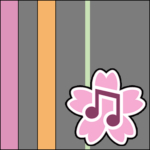
I-adjectives are one of the two main types of Japanese adjectives, the second being na-adjectives (which we learned about on the previous page).
An i-adjective gets it name from the fact that it is a word always ending in the hiragana “い / i”
Before I can show examples, I want to warn you that all i-adjectives have the word “is” built in. With na-adjectives, we had to use the copula “だ / da” or “です / desu” to add the meaning of “is” to our sentences. But for i-adjectives, “is” is always included with the meaning of the word. Just saying a single i-adjective alone counts as a real, complete sentence.
Even though I said you do not need a copula to add the meaning of “is” to a sentence with i-adjectives, you WILL see an i-adjective followed by “です / desu” in polite sentences. Do not think of this “です / desu” as meaning “is”! It is not really the polite copula we learned about previously. Think of it only as adding politeness to the adjective and having no other meaning.
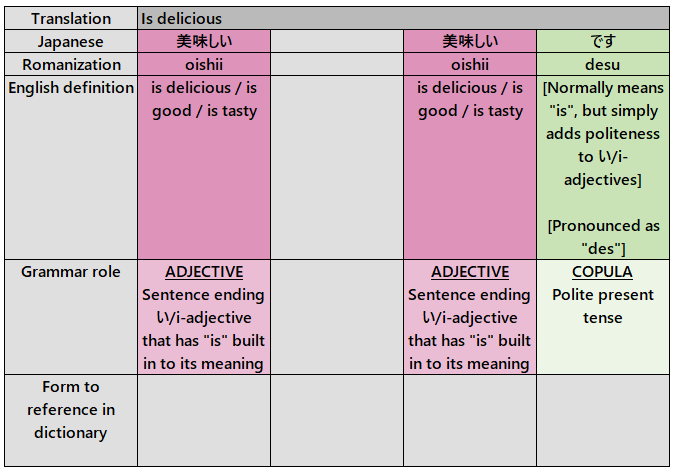
Both “oishii” and “oishii desu” mean “is delicious”.
Imagine someone biting into a tasty piece of cake and exclaiming “Oishii!” That is a complete sentence. But it’s definitely not something you would exclaim to someone of higher social status, you would only say it to yourself or good friends.
If you want to be a little more polite to someone socially important (like your boss who wanted you to taste a fancy cake he brought back from a business trip), you would exclaim “Oishii desu!” It still means “is delicious”, but is more polite.
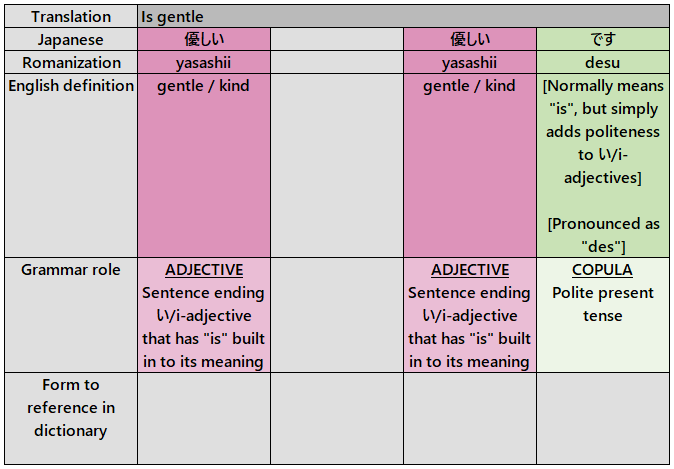
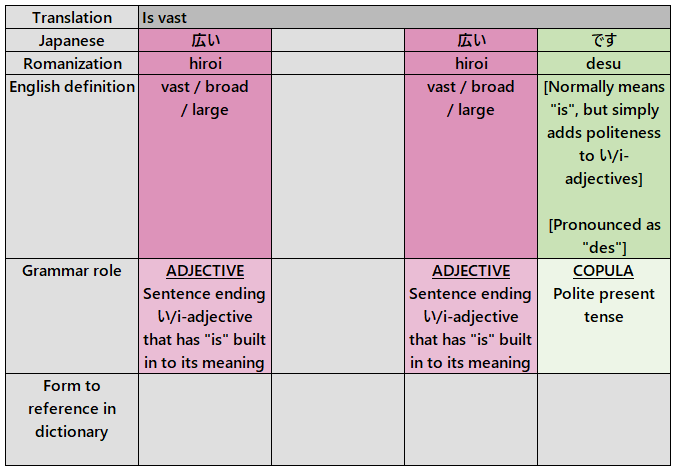
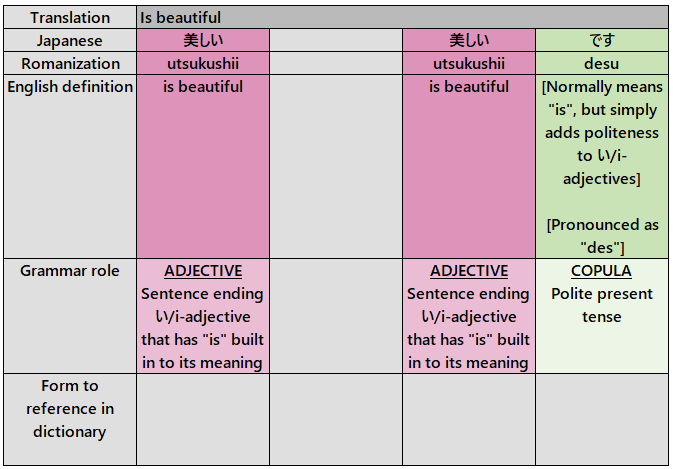
I know what you’re thinking. “Didn’t we already learn ‘kirei / beautiful’ on the previous page about na-adjectives?!” Yes! There is more than one way to describe the same word, just like in English. Something like pretty, gorgeous, beautiful– all of those describe the same thing through slightly different words. Don’t overthink it too much. Besides, i-adjectives and na-adjectives are used slightly differently, and you will see how as we progress in the grammar guide (ex: turning an i-adjective into an adverb).
The reason we are to think of “です / desu” as merely adding politeness, rather than meaning “is”, is because, surprisingly, past tense i-adjectives ALSO get “です / desu” after them.
It is NOT “oishikatta deshita”, that is incorrect. To add politeness to an i-adjective, always add “desu”!
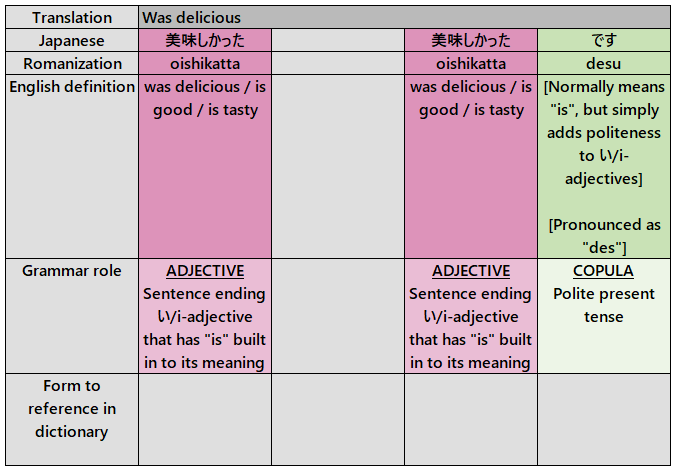
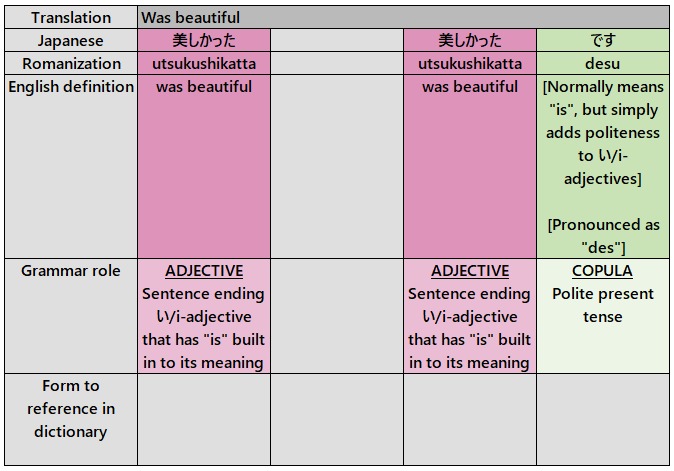
I know I just got done saying that i-adjectives have “is” built in, but if they are in front of a noun, that result is nullified. Think of the i-adjective + noun combo as being like a book or movie title, not a proper sentence. (We will see how to make a proper sentence in the next section.)
Pink, orange, light green.